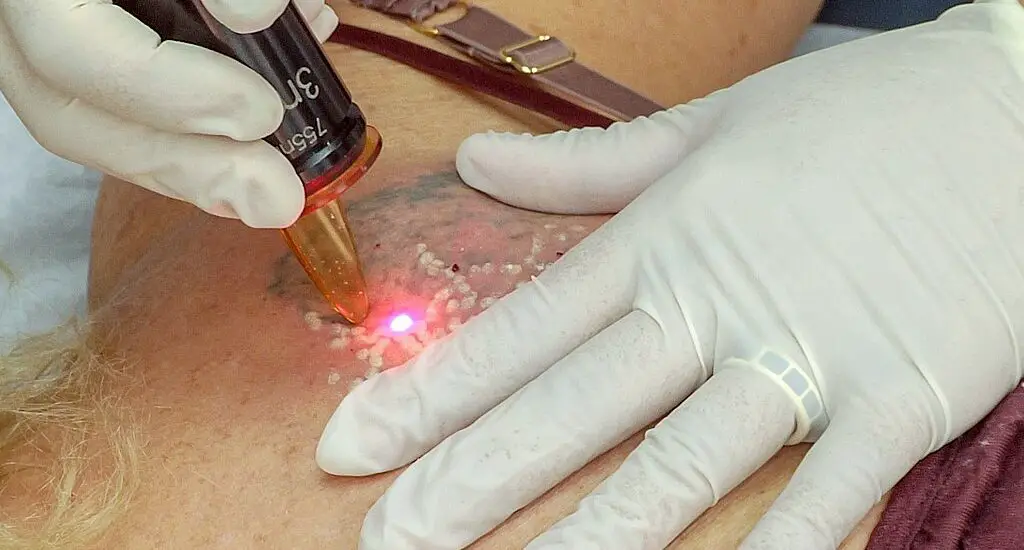If you’re seeking to understand what causes blisters after laser tattoo removal, this comprehensive guide is for you. We’ll discuss every facet of the process, from how laser tattoo removal works to why blisters form and how to care for them.

What Causes Blisters After Laser Tattoo Removal?
Blistering after laser tattoo removal is a common occurrence, and understanding why this happens is key to knowing how to manage it. During the laser procedure, high-energy light pulses target the tattoo ink under your skin. While this laser is specialized to focus on the ink, the surrounding skin can’t completely escape the impact.
The heat generated by the laser can lead to minor skin damage, initiating the body’s natural defense mechanisms. This defense includes the formation of blisters, which act as protective, fluid-filled barriers over the skin.
These blisters help prevent infections by sealing off the damaged area from external contaminants. In essence, the blistering is a sign that your body is healing and trying to remove the broken-down ink particles.
However, not everyone experiences blistering, as individual skin responses can vary. Factors like laser settings, your skin type, and the tattoo’s location can affect the likelihood of blister formation.
Prevention and Care
Although blistering is often an expected part of the healing process, proper aftercare is crucial to minimize complications and discomfort. Here’s a detailed guide on how to care for your skin post-treatment:
Keep it Clean: Use mild, unscented soap and lukewarm water to wash the treated area at least twice a day. This keeps the area free from bacteria, reducing the risk of infection.
Avoid Sun Exposure: The treated skin is more sensitive to UV rays, which can exacerbate irritation and potentially lead to scarring. Make sure to keep the area covered when going outdoors and use a high-SPF sunscreen.
This Aveeno Protect + Hydrate Body Sunscreen Lotion with SPF 60 from Walmart can provide you with the necessary protection you need against UV rays.
Don’t Pop Blisters: Although it might be tempting, popping the blisters can open up the skin to bacterial infections and slow down the healing process.
Cold Compress: Use a cold compress for 10 to 15 minutes at a time to alleviate burning sensations and minimize swelling. Avoid applying ice directly to the skin; instead, wrap the ice in a cloth.
Over-the-counter Pain Relief: Over-the-counter pain relievers like ibuprofen can help manage discomfort. However, consult your healthcare provider before taking any medication.
Check out these other articles…
Why is Tattoo Darker After Laser Removal? Quick Answer
What is the Best Laser for Black Tattoo Removal? Answered
Bumps Skin After Laser Tattoo Removal: Causes & Remedies
Brown Skin After Laser Tattoo Removal: Comprehensive Guide
Should Skin Blister After Laser Tattoo Removal? Easy Answer
How to Treat Skin After Laser Tattoo Removal: Essential Tips
When to Consult a Medical Professional
Mild blistering and discomfort are usually no cause for concern, but there are situations where medical advice is necessary. Let’s look at the scenarios where you should consider seeking professional help:
Severe Blistering: If you notice unusually large or numerous blisters, it might indicate that the laser settings were too high or your skin had an adverse reaction.
Signs of Infection: Redness that spreads, excessive warmth around the treated area, or discharge with an unusual color or odor can be signs of infection. Immediate medical intervention is essential in such cases.
No Improvement: If your skin doesn’t start showing signs of improvement within a week, or if the blistering appears to get worse, this is a sign you should consult a healthcare provider for a thorough evaluation.


